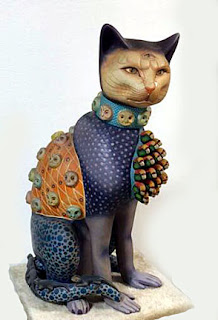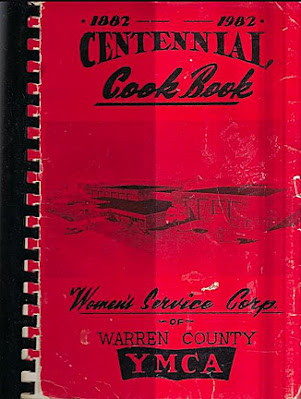 QUESTION: I love cats and have several. My friends call me the “Cat Lady.” My love of cats has spilled over into collecting just about anything that has to do with them. But my collection has sort of grown like Topsy. I’d like to make some sense of my collection and perhaps create a focused direction for it. What advice can you offer?
QUESTION: I love cats and have several. My friends call me the “Cat Lady.” My love of cats has spilled over into collecting just about anything that has to do with them. But my collection has sort of grown like Topsy. I’d like to make some sense of my collection and perhaps create a focused direction for it. What advice can you offer?
ANSWER: Any successful collection depends on good organization and a definite direction. But what’s most important is the passion that goes into it. Your love of cats is what fuels your collection. However, collecting without a focus leads to chaos.
Consider a theme and perhaps the type of cat you want to collect. With this in mind, make an inventory of your present collection. Keep only those pieces that follow your theme.
 The ancient Egyptians believed cats were magical creatures, capable of bringing good luck to the people who housed them. To honor these treasured pets, wealthy families dressed them in jewels and fed them treats fit for royalty. When the cats died, they were mummified.
The ancient Egyptians believed cats were magical creatures, capable of bringing good luck to the people who housed them. To honor these treasured pets, wealthy families dressed them in jewels and fed them treats fit for royalty. When the cats died, they were mummified.
The Egyptians depicted several deities with sculptured cat-like heads such as Mafdet, Bastet and Sekhmet, representing justice, fertility and power. The deity Mut was also depicted as a cat and in the company of a cat. They also praised cats for killing venomous snakes and protecting the Pharaoh since at least the First Dynasty of Egypt.
Archaeologists have discovered skeletons of cats among funerary goods dating to the 12th Dynasty. The Book of the Dead indicates the protective function of cats in the afterlife. By the New Kingdom of Egypt cats the cat cult became more popular in daily life.
 Cat collectibles range from an Egyptian bejeweled cat made in 600 B.C.E. to Tony the Tiger and Garfield today. The images of cats have been around 2,500 years and have seldom been more popular than today, be it an Art Deco lamp or a bronze statue.
Cat collectibles range from an Egyptian bejeweled cat made in 600 B.C.E. to Tony the Tiger and Garfield today. The images of cats have been around 2,500 years and have seldom been more popular than today, be it an Art Deco lamp or a bronze statue.
For over a century, advertising executives have used images of cats. By the early 20th century, ad agencies used cats to sell just about everything. Some cats, such as Chessie the C&O Railroad cat and Everyready Battery cats, got to be major advertising stars. Felix the Cat rose to stardom in cartoonland.
 Cat ephemera, or paper goods, have also inspired collectors. Besides a variety of sheet music, there were such early advertising trade cards as Standard Sewing Machine and Dr. Thomas Electric Oil. Eventually, even Coca Cola began using cats in its advertising in leading magazines in the 1920s. Turn-of-the-20th-century postcards also featured cats and kittens drawn by famous artists of the time.
Cat ephemera, or paper goods, have also inspired collectors. Besides a variety of sheet music, there were such early advertising trade cards as Standard Sewing Machine and Dr. Thomas Electric Oil. Eventually, even Coca Cola began using cats in its advertising in leading magazines in the 1920s. Turn-of-the-20th-century postcards also featured cats and kittens drawn by famous artists of the time.
As impossible as it may seem, there was a major advertising link between cats and cigars in the 1880s. Booming cigar companies hired artists to design lavish labels and boxes featuring animals, including cats.
 Some of these old and treasured cigar boxes have lasted for years, mainly because they were attractive enough and sturdy enough for people to use them to store other items for a long time.
Some of these old and treasured cigar boxes have lasted for years, mainly because they were attractive enough and sturdy enough for people to use them to store other items for a long time.
After over 100 years, collectors can still find examples of the Brenner Brothers Cats cigars, Old Tom and Pussy of the K.H. Jacobs Company of Pennsylvania, Tabby of H. Traiser Company of Boston, and ME-OW cigars offered by Austin-Nichols of New York.
Cats were also in tune in 1915 with an issue of sheet music entitled, “Pussyfoot Fox Trot” which promoted the latest dance craze. The Frank Root Company published it. In 1923, another popular cart number, “ The Cat’s Whiskers,” was published by Ed Gladstone and Felix.
 The cat image can also be found in cookie jars to traditional ceramic figurines, from Berwick to Royal Doulton and from Royal Worcester to chalk ware. Glass and bronze figures of cats had also become popular over the last two centuries.
The cat image can also be found in cookie jars to traditional ceramic figurines, from Berwick to Royal Doulton and from Royal Worcester to chalk ware. Glass and bronze figures of cats had also become popular over the last two centuries.
Cats from the Victorian Era to the Roaring 20s also made the scene in children’s books, on bottles, rugs, and jewelry.
One of the most popular items to collect are cat figurines. Most cat figurines have very realistic features. Some are free standing while others are created with in a variety of themes. Figurines have been made from a variety of materials, including glass, wood, clay, porcelain, ceramic, fine crystal, and metal. Ceramic cat figurines are the most popular with collectors.
 There are many breeds of cats. Some collectors focus on just one or several. For those who prefer a more exotic collection, there are the big wild cats—lions, tigers, panthers, cheetahs, and such.
There are many breeds of cats. Some collectors focus on just one or several. For those who prefer a more exotic collection, there are the big wild cats—lions, tigers, panthers, cheetahs, and such.
Besides collecting cat items for the kind of cat they represent, there are also sleeping cats, funny cats, fat cats, cartoon cats, crazy cats, and angel cats. Some figurines depict cats doing things like climbing a tree or pawing a goldfish in a bowl.
To read more articles on antiques, please visit the Antiques Articles section of my Web site. And to stay up to the minute on antiques and collectibles, please join the over 30,000 readers by following my free online magazine, #TheAntiquesAlmanac. Learn more about old-time winter objects in the 2022/2023 Winter Holiday Edition, with the theme "Winter Memories," online now. And to read daily posts about unique objects from the past and their histories, like the #Antiques and More Collection on Facebook.











































